They may not be the tallest trees, or the oldest, but the giant sequoias in California’s Sequoia National Park are the largest known trees on earth by volume. They are, in many respects, the opposite of bonsai, but they can certainly inform our understanding of age, character, beauty – and scale – in nature. I spent a few days last week hiking around the sequoias with my father and was amazed by how massive these trees are. Here’s the view from the parking lot at our first stop – Grant Grove.

Big trees – or tiny cars
Giant sequoias have been growing in the Sierra Nevada for a long time. The oldest living specimens are up to 3,200 years old. The tallest reaches 311′. But what’s so hard to convey in photos, is how simply massive they are.
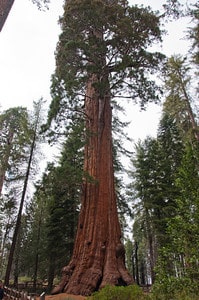
Big tree
The Grant Grove contains the General Grant Tree, the world’s third biggest tree by volume and the largest sequoia by diameter at 40′. It’s hard to appreciate it as it stands in fairly close proximity to other, much smaller, trees. President Calvin Coolidge proclaimed the Grant Tree to be America’s Christmas tree in 1926.
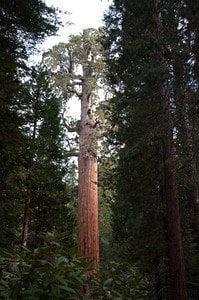
General Grant Tree
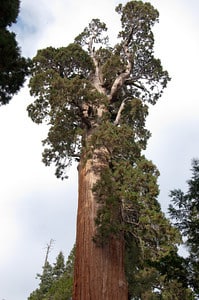
Grant Tree apex
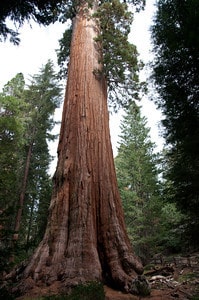
Lower portion of the Grant Tree
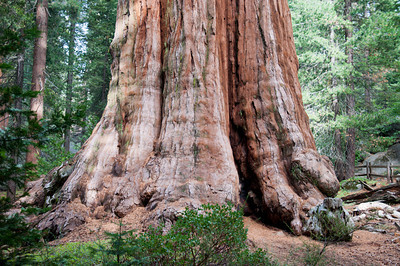
Grant Tree trunk
The park contains a number of signs with facts to help us comprehend the trees’ massiveness. For example, a sign near the General Grant Tree informs visitors that, “If the General Grant Tree’s trunk could be filled with sports equipment, it could hold 159,000 basketballs, or more than 37 million ping-pong balls,” and that, “If the trunk of the General Grant Tree was a gas tank on a car that got 25 miles per gallon, you could drive around the earth 350 times without refueling.”
I’m better processing the world in human terms. It’s much easier to tell how big a tree is when people walk by.
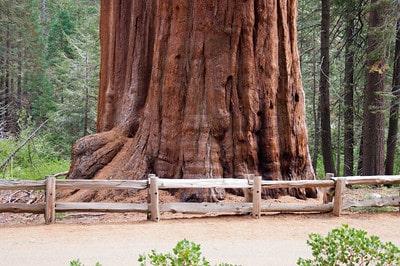
Big trees
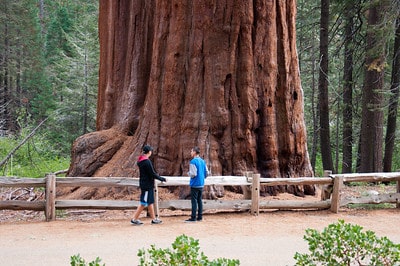
Big trees with people
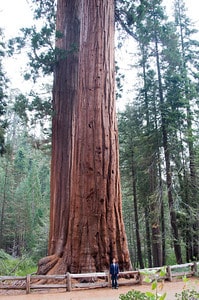
The author in front of said “big trees”
Looking straight up is fun, but that too fails to convey size.
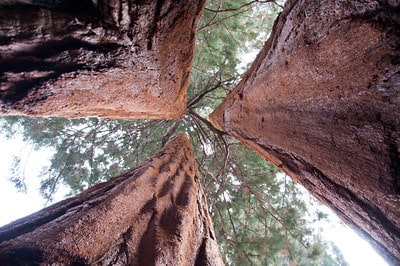
Checking out the first branches from 200′ below
My favorite example of putting the trees into perspective is the shot below of my father standing next to a sequoia in Lost Grove.
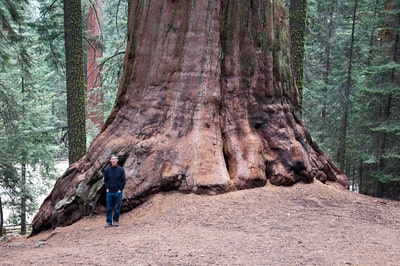
Father and giant in Lost Grove
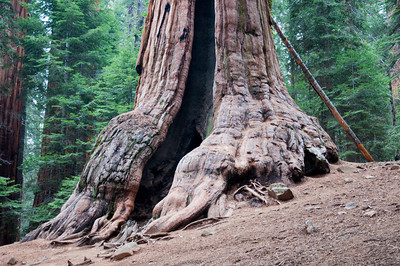
Same tree from downhill side
The largest of the bunch is the General Sherman Tree. It’s 275′ tall and 52,500 cubic feet big. It’s also 2,200 years old and weighs in at 1,385 tons. “If the Sherman Tree’s trunk could be filled with water it would provide enough water for 9,844 baths. That’s one bath every day for 27 years.”
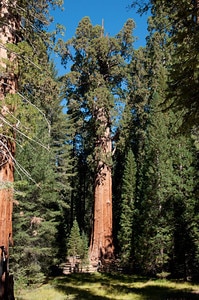
General Sherman tree, or, a lot of baths
My father and I visited a number of groves and never got tired of seeing the impossibly big trees.
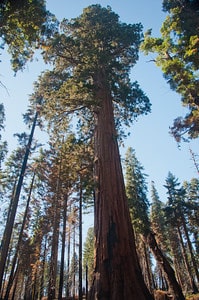
Nameless sequoia among much smaller white firs
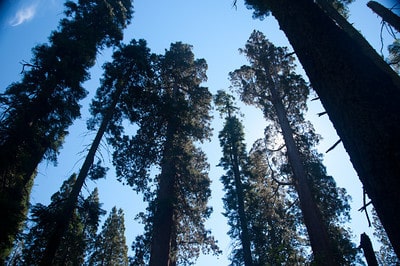
An imposing stand of sequoias at the Redwood Mountain Grove
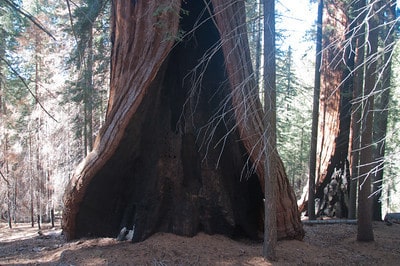
Trunk of the Hart Tree – roughly the 25th largest tree in the world
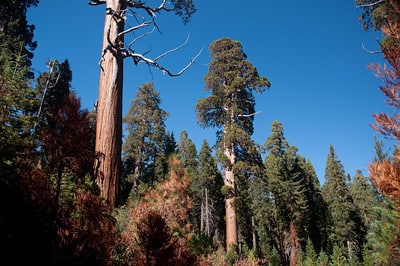
Afternoon sun against a stand of sequoias
Janet wrote about the sequoias on a similar visit – see The biggest trees on earth for details.
Subscribe to Bonsai Tonight
New Posts Delivered Every Tuesday and Friday
Lieve says
Very impressive. Another proof of how small and insignificant we humans are. These trees breathe so much superiority, asking for respect that we as humble people only can give.
Thank you for sharing this with us.
Lieve
bonsai eejit says
I’m planning a ‘Road Trip’ holiday in the States in a few years and the West Coast is on the route. I can’t wait to see these mega trees for myself. Awe inspiring! Thanks for sharing.
Regards
Ian
bonsai eejit
gaycarboys says
great inspiration. The Hart tree is just extraordinary.
Scott Roxburgh says
Arrgh! this time last year I would be just arriving at Sequoia National Park after a LONG drive through Death Valley! Alas I am at work!
Ziggy says
Has anyone done a Bonsai version?
xwires says
I think I’ve seen some sequoia bonsai, but in general the variety doesn’t lend itself to refinement under 3′ – not that I’ve seen anyway.
Janet Roth says
@Ziggy – IMO it’s not possible to “do a bonsai version”. At least, if what you are trying to do is use a giant sequoia growing in a bonsai pot to distill and show the essence of “sequoianess”. In my view, bonsai as an art is not simply growing trees in pots and collecting species names on your life list – it is about distilling the essence of those trees in a way that brings some essential aspect of the nature of those trees into our homes and lives. I think of it as the life-and-death story of the trees.
First off, trees change character as they age, and show their essential qualities when they achieve real maturity. The sequoia don’t enter the “monarch” stage until they are about 1500 years old. The basic form of the tree changes dramatically as they reach that full maturity, and that form gives them the grandeur. A younger tree will never have it, no matter what you do.
Second, as Jonas tries to show, it is just impossible to imagine the scale of the trees. And that true scale also is not evocable in our bonsai medium. Bonsai as an art can capture aspects of the life and death of many trees, but not these. I have seen many bonsai that use coastal redwood, and I’ve never seen one that can possibly evoke the feeling of walking among the old growth redwoods. And that would be even more so I think for the sequoia.
(and of course, who knows how well someone could replicate the particular growing conditions and seasons where they live in the middle elevations of the western Sierra. These trees are quite picky about that!).
To see and understand the life-and-death of the giant sequoia you will need to visit them where they live . I promise, you will never forget your trip !
bonsai eejit says
These links might be of interest. Bonsai Redwoods being discussed on the IBC.
http://ibonsaiclub.forumotion.com/t4471-sequoia-sempervirens?highlight=sequoia
http://ibonsaiclub.forumotion.com/t564-giant-sequoia-redwoods-sequoiadendron-giganteum-anyone-have-bonsai-experiance-with-these-relics?highlight=sequoia